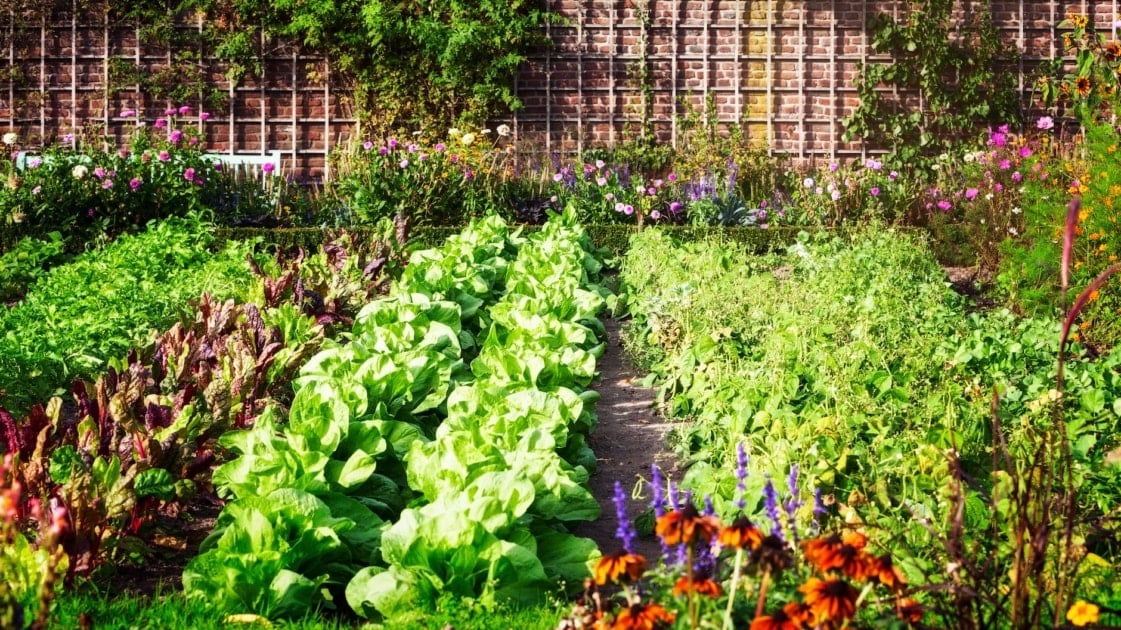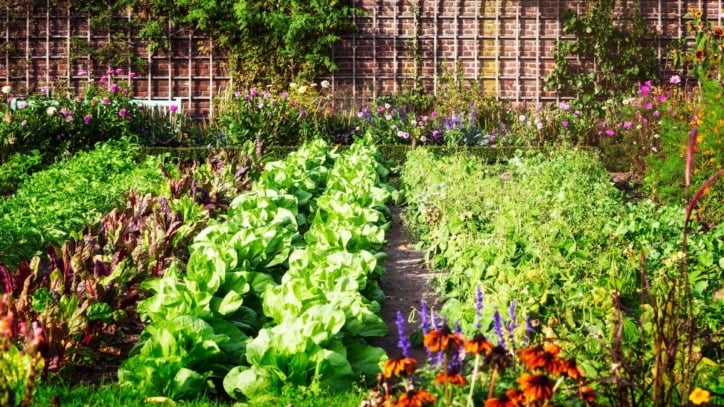Coplanting: The Ultimate Guide To Growing More Food In Less Space
Coplanting: The Ultimate Guide to Growing More Food in Less Space
Do you have a small garden but want to grow more food? If so, companion planting is the answer for you! Companion planting is a gardening technique that involves growing different plants together to enhance each other's growth and deter pests. By planting the right combinations of plants, you can boost your yields, improve your soil quality, and reduce your reliance on pesticides.
In this blog post, we will discuss the basics of companion planting and provide you with a comprehensive guide to growing more food in less space. We will cover topics such as:
- How companion planting works
- What plants are good companions for each other
- How to plan and design your companion planting garden
- How to care for your companion planting garden
How Companion Planting Works
Companion planting is based on the principle of plant symbiosis. This means that certain plants benefit from being grown in close proximity to each other. For example, some plants release chemicals that repel pests, while others attract beneficial insects. Some plants also have deep roots that help to aerate the soil, while others have shallow roots that help to suppress weeds.
By planting the right combinations of plants, you can create a mutually beneficial environment for your garden. This will lead to healthier plants, higher yields, and less pest damage.
What Plants Are Good Companions for Each Other
There are many different companion planting combinations that you can try. Some of the most popular pairings include:
- Beans and corn: Beans fix nitrogen in the soil, which corn needs to grow. Corn provides support for the beans to climb.
- Carrots and tomatoes: Carrots help to deter pests from tomatoes, while tomatoes help to deter pests from carrots.
- Cucumbers and melons: Cucumbers and melons need full sun and well-drained soil. By planting them together, you can help to create a microclimate that is ideal for both plants.
- Herbs and vegetables: Many herbs can repel pests and attract beneficial insects. Planting them near your vegetables can help to keep your garden healthy and pest-free.
How to Plan and Design Your Companion Planting Garden
When planning your companion planting garden, it is important to consider the following factors:
- The size of your garden: If you have a small garden, you will want to choose plants that are compatible with each other and that will grow well in the space you have available.
- The climate in your area: Some plants are better suited for certain climates than others. Make sure to choose plants that will thrive in the climate where you live.
- The sun exposure in your garden: Some plants need full sun, while others prefer partial shade. Make sure to choose plants that have the same sun exposure requirements.
- The soil type in your garden: Some plants prefer sandy soil, while others prefer clay soil. Make sure to choose plants that will grow well in the type of soil you have.
Once you have considered these factors, you can start to plan your companion planting garden. There are many different ways to design your garden. You can create a traditional square or rectangular garden, or you can get creative and design a more organic-shaped garden.
No matter how you design your garden, make sure to leave enough space between plants so that they have room to grow. You should also water your garden regularly and fertilize it as needed.
How to Care for Your Companion Planting Garden
Once your companion planting garden is established, you will need to care for it regularly. This includes watering, fertilizing, weeding, and pest control.
Water your garden regularly, especially during hot, dry weather. You should also fertilize your garden once a month during the growing season.
Weed regularly to prevent weeds from competing with your plants for water and nutrients.
If you see any pests in your garden, you can try to control them using natural methods such as insecticidal soap or neem oil. If these methods are not effective, you may need to use chemical pesticides.
Conclusion
Companion planting is a great way to grow more food in less space. By planting the right combinations of plants, you can boost your yields, improve your soil quality, and reduce your reliance on pesticides.
If you are new to companion planting, start small and gradually add more plants to your garden as you become more familiar with the concept. With a little planning and care, you can create a thriving companion planting garden that will provide you with fresh, healthy food for years to come.
Co planting, also known as companion planting, is a gardening technique that involves planting different plants together in order to benefit each other. Some plants can help to repel pests, while others can improve the soil quality or even the flavor of the vegetables that you grow.
If you're new to co planting, it can be helpful to consult a companion planting chart. These charts will show you which plants are compatible with each other and which ones should be avoided. You can find companion planting charts online or at your local garden center.
One of the benefits of co planting is that it can help to reduce the need for pesticides. When you plant plants that repel pests, you'll be less likely to have to use chemicals to control them. This is better for the environment and for your health.
Another benefit of co planting is that it can help to improve the soil quality. Some plants, such as legumes, fix nitrogen in the soil, which can help to fertilize other plants. Other plants, such as carrots, aerate the soil, which can help to improve drainage and water retention.
If you're interested in learning more about co planting, I recommend visiting Gardenia Inspiration. This website has a wealth of information on the topic, including companion planting charts, articles, and videos.
FAQ of co planting
Question 1: What is co-planting?
Answer: Co-planting is a gardening technique where two or more plants are grown in close proximity to each other. This can be done in a single pot, raised bed, or garden plot. The goal of co-planting is to create a mutually beneficial relationship between the plants, where they help each other to thrive.
Question 2: What are the benefits of co-planting?
Answer: There are many benefits to co-planting, including:
- Increased yields: Co-planted plants can help each other to grow more quickly and produce more fruit or vegetables.
- Improved pest control: Some plants can help to deter pests from attacking others. For example, marigolds can help to repel mosquitoes and other insects.
- Enhanced pollination: Some plants can help to pollinate each other, which can lead to increased fruit production.
- Improved soil health: Co-planting can help to improve the health of the soil by attracting beneficial insects and microorganisms.
- Reduced workload: Co-planting can help to reduce the amount of weeding and watering that is needed.
Question 3: What are some good companion plants?
Answer: There are many different companion plants that can be grown together. Some popular combinations include:
- Beans and corn: Beans fix nitrogen in the soil, which corn can use. Corn provides shade for beans, which helps to protect them from the sun.
- Carrots and onions: Carrots deter root-knot nematodes, which can damage onions. Onions repel carrot flies, which can damage carrots.
- Marigolds and tomatoes: Marigolds repel nematodes and other pests that can damage tomatoes.
- Peas and lettuce: Peas fix nitrogen in the soil, which lettuce can use. Lettuce shades the roots of peas, which helps to prevent them from drying out.
- Spinach and kale: Spinach grows quickly and provides shade for kale, which can help to protect it from the sun.
Question 4: How do I choose companion plants?
Answer: When choosing companion plants, it is important to consider the following factors:
- The plants' growth habits: Some plants grow tall and need plenty of space, while others grow more compactly.
- The plants' water and nutrient requirements: Some plants need more water or nutrients than others.
- The plants' susceptibility to pests and diseases: Some plants are more susceptible to pests and diseases than others.
- The plants' flowering times: If you want to have a continuous supply of flowers, you can choose plants that flower at different times of the year.
Question 5: What are some common mistakes to avoid when co-planting?
Answer: Some common mistakes to avoid when co-planting include:
- Planting plants that have different water and nutrient requirements together.
- Planting plants that are susceptible to the same pests and diseases together.
- Planting plants that have different growth habits together.
- Planting plants that flower at the same time together.
- Not considering the climate and location when choosing companion plants.
Image of co planting
5 different images of co planting from Pinterest:
- Image 1: A pot of herbs with different types of herbs planted together, such as basil, rosemary, and thyme.

- Image 2: A row of vegetables planted together in a garden, such as tomatoes, cucumbers, and zucchini.

- Image 3: A hanging basket with flowers of different colors and types planted together.

- Image 4: A terrarium with succulents and cacti of different sizes and shapes planted together.

- Image 5: A window box with flowers and herbs planted together.

Post a Comment for "Coplanting: The Ultimate Guide To Growing More Food In Less Space"